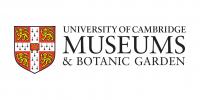The fossil vertebrates collection include material collected during field expeditions throughout the 20th century led by Sir Clive Forster-Cooper, Francis Rex Parrington, and Jenny Clack, with additional collections from David Meredith Seares Watson. They represent key material that has been used to interpret the origins and evolution of fishes, tetrapods, reptiles and mammals. Forster-Cooper (Museum Director, 1914 – 1938) and Parrington (Museum Director, 1938 – 1972) built extensive collections of fossil fishes through multiple expeditions to Devonian localities throughout the UK.
Through the work of Jenny Clack, the museum has a substantial collection of early tetrapod material from the Devonian of Scotland. Clack’s work transformed our understanding of the evolution of tetrapods onto land, including the origins of locomotory and sensory adaptations for life out of water, as well as the tempo and mode of early diversifications. All tetrapod taxa and specimens from the Scottish localities are new to science, and the Museum has multiple holotypes and other material under study.
Key fossils in the UMZC for understanding critical stages in vertebrate evolution such as the diversification of synapsids, the evolution of mammalian and reptilian hearing, and the early evolution of archosaurs were studied by Parrington. Parrington also collected extensive records of early mammals and lepidosaurs from late Triassic fissure-fill deposits in Wales and the West Country. Further material illuminating crucial stages in mammalian evolution through the collections of Watson, which include specimens elucidating the early evolution of Palaeozoic tetrapods and mammal evolution in the Tertiary.





